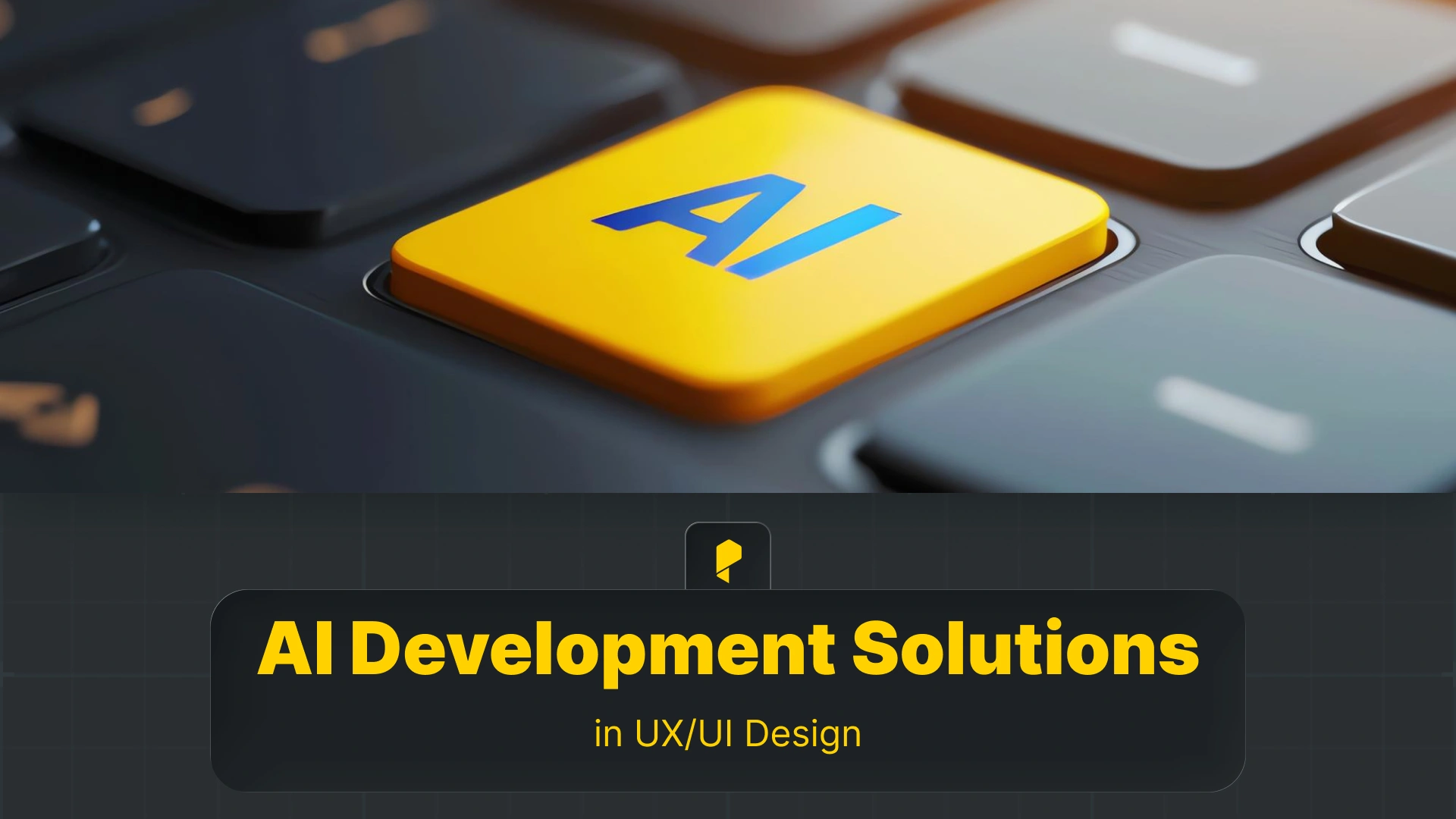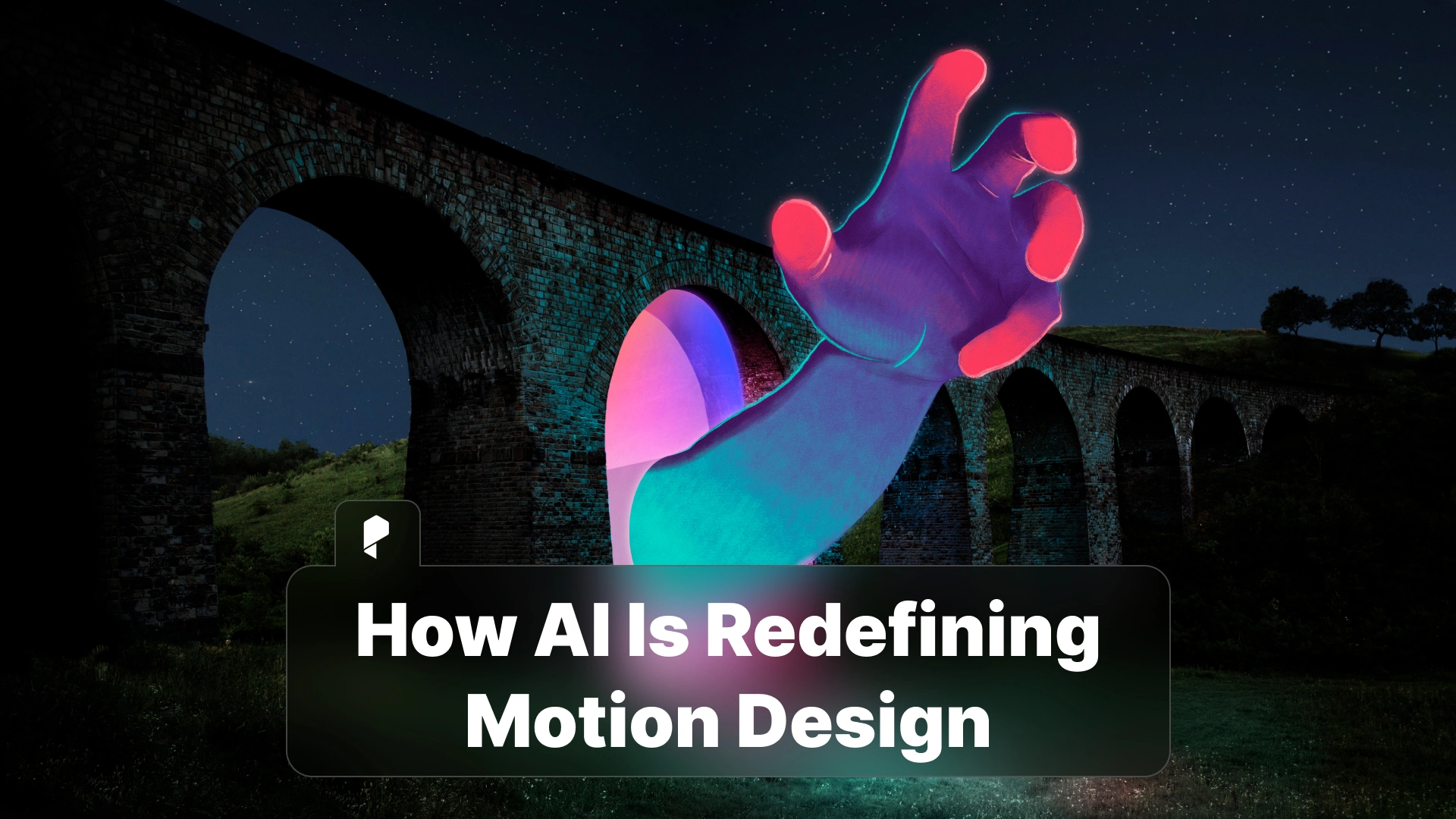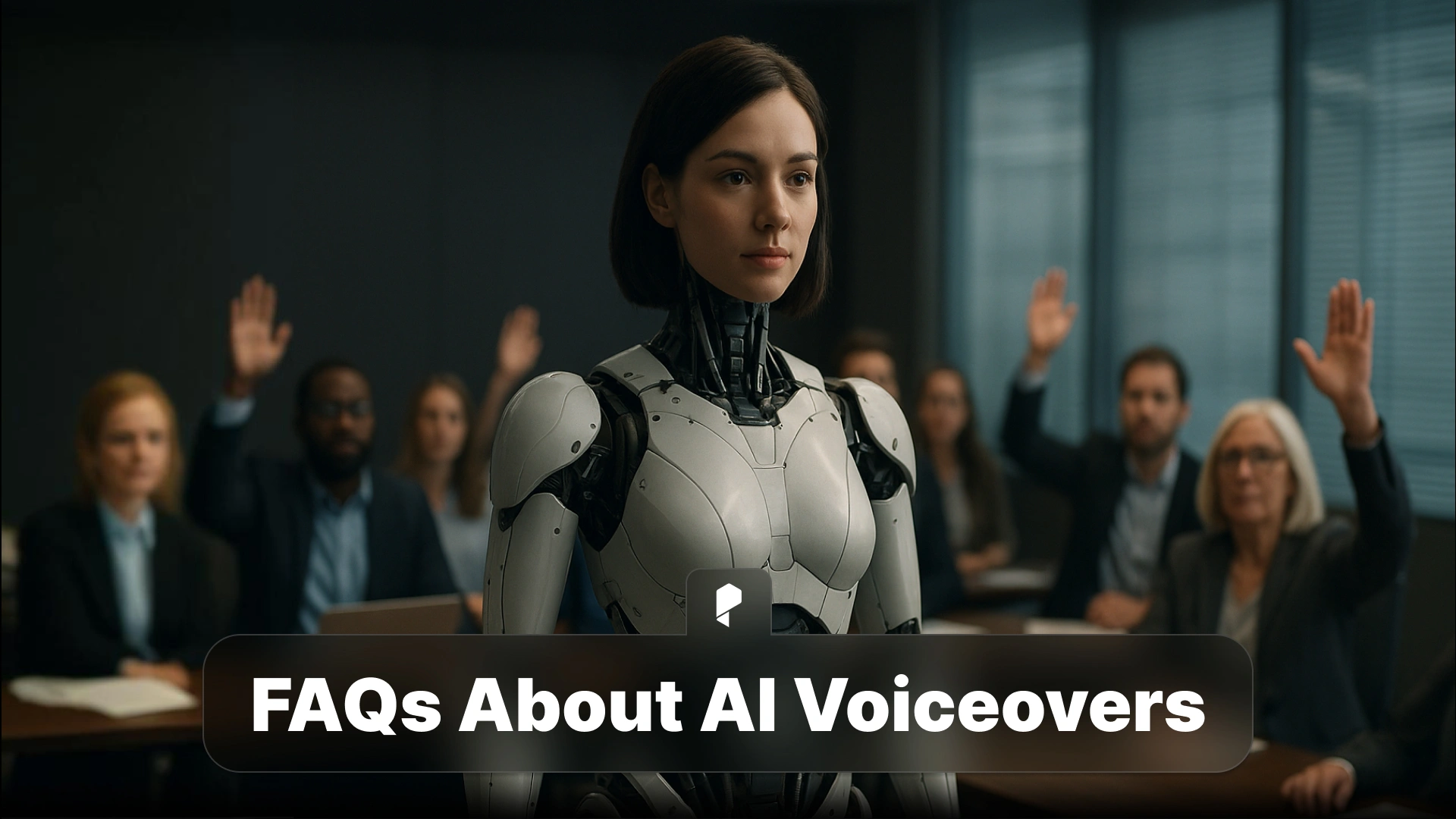AI Voiceovers vs. Human Voice Actors: Pros & Cons
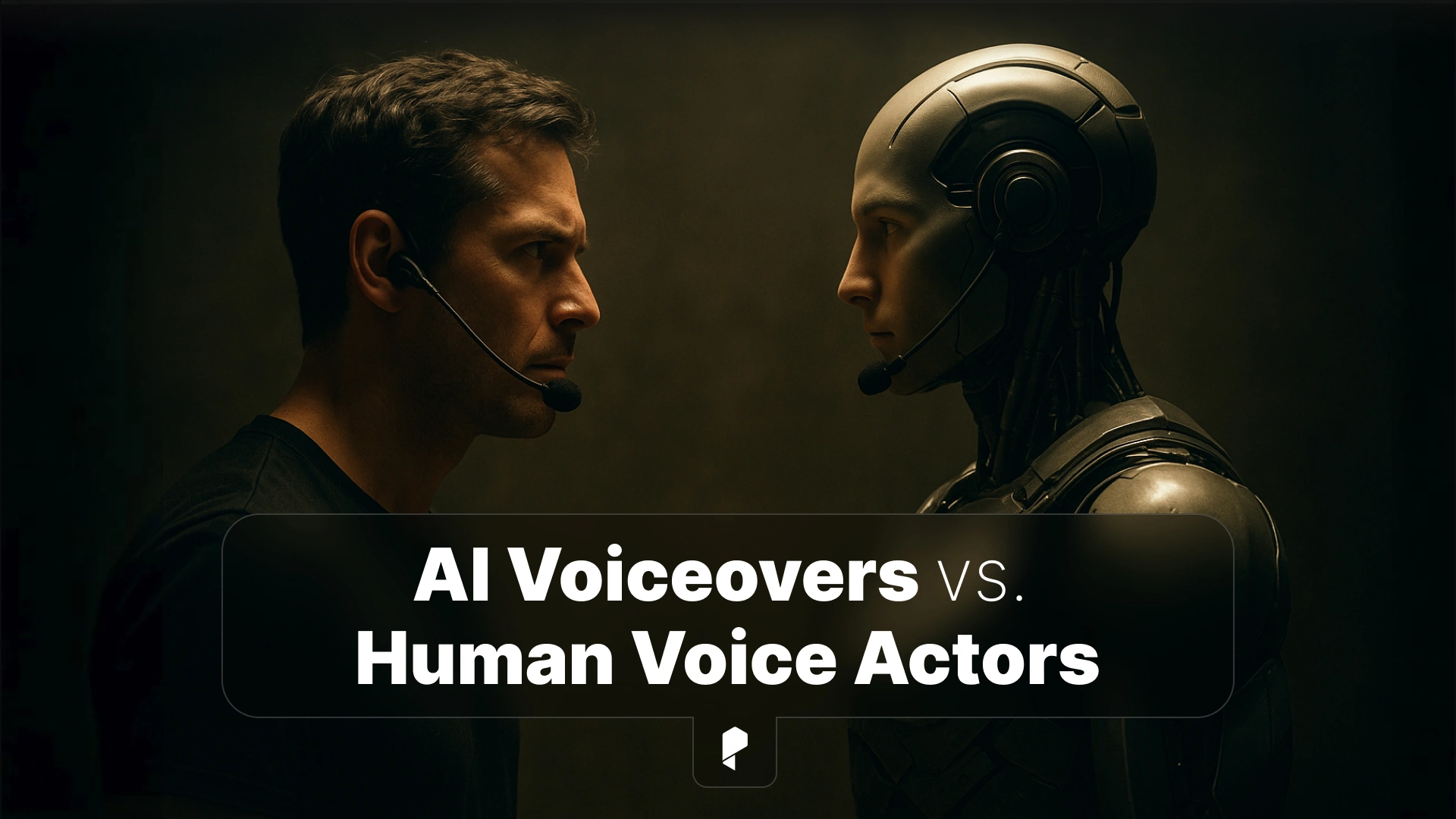
In this post, we’ll take a balanced look at the AI voiceovers pros and cons, the unique strengths of human talent, and where each option shines.
The Rise of AI Voiceovers
Creators and businesses are flocking to AI technology because it offers:
- Instant availability – no scheduling conflicts.
- Affordable access to professional-quality voices.
- Global scalability for multilingual content.
With tools like AI voiceover generators, even small teams can produce high-quality narration at scale. This shift explains why training videos, podcasts, and short ads increasingly rely on AI solutions.
For a deeper dive into how this technology works, check out our guide on How AI Voiceovers Work: Technology Behind the Voices.
The Unique Strengths of Human Voice Actors
Human voice actors excel at:
- Emotional depth – They can convey joy, sadness, fear, or excitement with natural variation.
- Nuance and improvisation – Adjusting tone mid-performance or reacting to creative direction.
- Authenticity and relatability – Audiences often connect more deeply with a real human.
This is especially important in AI vs human voice acting for specialized fields like gaming, film, or high-end commercials, where characters require unique, immersive personalities.
Want to see the human touch vs AI technology in the voiceover industry in action? Explore our analysis of the Benefits of AI Voiceovers for Content Creators to understand where AI helps but doesn’t replace human artistry.
Professional Video Templates
Advantages of AI Voiceovers
Key benefits of AI voiceovers include:
- Affordability – No need to hire expensive talent for every project.
- Speed – Generate narration in minutes rather than waiting on recording schedules.
- Scalability – Produce thousands of lines or multilingual versions instantly.
- Flexibility – AI can adapt to different styles, tones, and formats with a few clicks.
For example, choosing an AI voiceover vs human narrator for YouTube videos makes sense if you’re producing frequent content on a tight budget. Platforms like Pixflow’s AI Voiceover make this process seamless for creators at every level.
The Limitations of AI Voiceovers
Current limitations include:
- Lack of deep emotional connection – AI voices can sound flat in dramatic storytelling.
- Struggles with complex scripts or humor – Irony, sarcasm, or timing often miss the mark.
- Uncanny valley effect – When a voice sounds “almost human” but still slightly unnatural.
This is why many experts argue why AI voiceovers can’t replace human voice actors completely—at least not yet. AI shines in speed and cost-efficiency, but for emotionally charged performances, humans remain irreplaceable.
For examples of real-world use cases, see our guide on Best AI Voiceover Tools in 2025.
The Limitations of Human Voice Actors
Challenges include:
- Higher costs – Hiring experienced talent, studios, and editors quickly adds up.
- Longer production timelines – Scheduling, recording, and revisions can delay projects.
- Availability issues – Top voice actors may be booked out or unavailable on short notice.
- Inconsistency – Voices can vary slightly between sessions due to mood, energy, or environment.
These hurdles make it harder for smaller creators or fast-paced businesses to rely exclusively on humans.
Side-by-Side Comparison Table
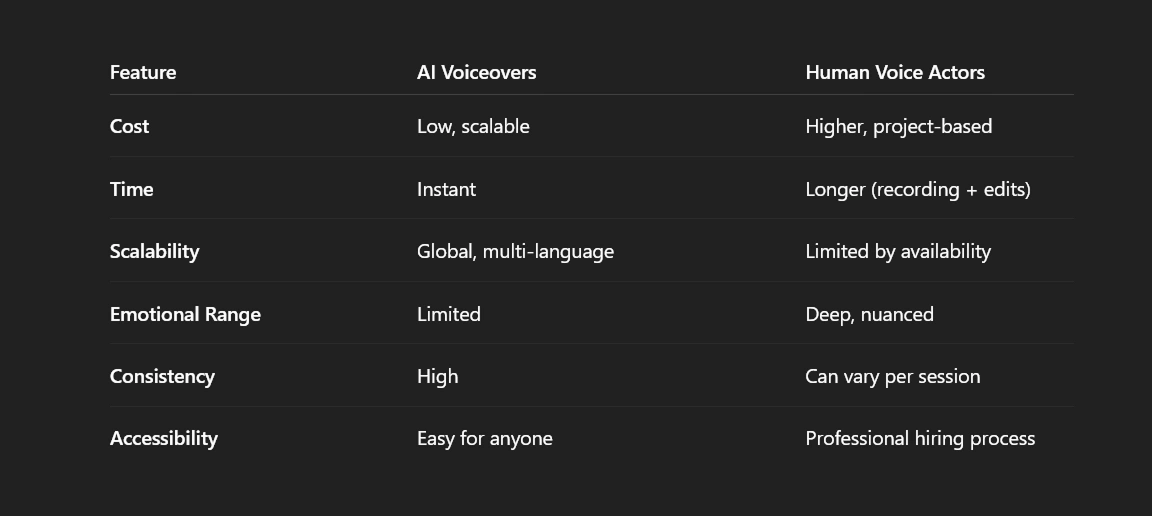
Where Each Option Works Best
AI voiceovers work best for:
- Content creators producing frequent YouTube videos.
- Training materials and e-learning modules.
- Short ads or social media clips.
- Businesses expanding into multiple languages quickly.
Human voice actors excel in:
- High-end commercials where brand image is at stake.
- Audiobooks that require long-form emotional storytelling.
- Video games where character depth is crucial.
- Films and TV series where immersion matters.
This is where human touch vs AI technology in the voiceover industry becomes clear: AI is ideal for speed and reach, while humans dominate when creativity and connection matter most.
For deeper insights, explore our guide on AI Voiceovers: The Complete Guide.
The Future is in Hybrid Models
- AI generates a first draft of narration.
- Human actors refine, add emotion, or voice key parts.
- Teams save time and costs while keeping the “soul” of performance.
This hybrid model could reshape the industry, allowing creators to leverage the benefits of using AI voiceover instead of hiring actors for repetitive tasks, while still depending on human artistry for storytelling and emotional resonance.
The result? Faster production without sacrificing quality.
Final Thoughts
- AI offers affordability, scalability, and efficiency.
- Humans bring authenticity, emotional depth, and relatability.
The smartest approach is choosing based on project goals. For routine or scalable content, AI shines. For emotionally rich performances, humans remain irreplaceable.
As the industry evolves, expect to see hybrid workflows where both AI and humans contribute to creating the most impactful voiceovers possible.
👉 Ready to experiment with AI narration yourself? Explore Pixflow’s AI Voiceover to see how you can bring your projects to life with cutting-edge technology.
If you buy something through our links, we may earn an affiliate commission or have a sponsored relationship with the brand, at no cost to you. We recommend only products we genuinely like. Thank you so much.





